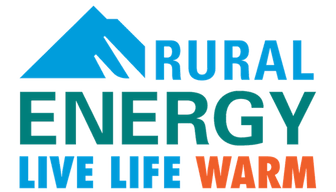What Are the Best Heating Options for Remote Cabins?
One of the main appeals of living in a cabin is the warm and cozy atmosphere that it provides during the winter months. If you want to maintain this atmosphere, you need to choose the right heating system. Start by weighing these options and considering your cabin’s unique features to determine the best method to keep that cozy feeling.
Wood Stove
The wood stove is a classic and reliable heating solution for traditional log cabins. A single stove, when maintained at temperatures between 500- and 800-degrees Fahrenheit, can generate enough warmth to heat an entire home, provided you have a steady supply of firewood. With proper use, you can keep a consistent smolder throughout the winter, ensuring a comfortable indoor temperature.
Although large wood stoves can cost upwards of $5,000, plus installation fees, they offer long-term savings. Constructed from durable materials such as stone, steel, or cast iron, these stoves are built to last a lifetime. Additionally, using wood as a primary fuel source is significantly more cost-effective than relying on fossil fuels or electricity.
Pellet Stoves
Pellet stoves use compacted pellets instead of traditional firewood, offering a cleaner and more efficient alternative for solid-fuel heating. While they produce slightly less heat than conventional wood stoves, they are among the cleanest residential heating options available. Most EPA-approved models achieve an efficiency rating between 70% and 83%, making them comparable to modern heating systems, which typically reach around 90% efficiency.
Pellet stoves are relatively affordable, with most models ranging from $1,700 to $3,000, plus installation costs. Their lower price point is largely due to the wide availability of fuel. These stoves can burn a variety of biomass materials, including:
- Compressed wood pellets
- Nutshells
- Corn kernels
- Other organic matter
Many pellet stoves feature built-in storage containers and automated feeding systems, ensuring that only the necessary amount of fuel is burned at any given time. While these features require electricity to operate, they add only about $9 per month to a typical household’s electricity bill. Overall, pellet stoves provide an eco-friendly, cost-effective heating solution that balances convenience with sustainability.
Gas Stoves
While wood and pellet stoves are often associated with the traditional charm of cabin living, gas stoves provide a convenient and efficient alternative. Many modern gas stove models are designed to replicate the look and feel of classic wood-burning stoves, offering the same rustic aesthetic without the hassle of chopping, storing, or continuously feeding firewood or pellets. For homeowners with access to a natural gas line, these stoves provide a hassle-free heating solution with instant ignition, adjustable heat settings, and minimal maintenance requirements.
Propane
For those without a natural gas connection, propane-powered gas stoves are an excellent alternative. Propane burns cleaner than natural gas, producing fewer emissions while still delivering consistent and efficient heat. One of propane’s biggest advantages is its widespread availability—it can be easily purchased from local gas stations, home improvement stores, or propane suppliers. Additionally, propane does not expire, allowing homeowners to store a long-term supply for use throughout the winter.
Factors to Consider When Choosing a Heating System
Before selecting a heating system for your cabin, it's essential to evaluate several factors related to its location and design. Some key considerations include:
- Climate: If your cabin is in an area with harsh winters, prioritizing heat output over energy efficiency is crucial. In such cases, a wood or pellet stove may be the most effective option.
- Fuel Availability: If your cabin is surrounded by dense forests, a wood stove offers a nearly endless supply of fuel with proper management. If firewood is scarce but propane is readily available, a gas stove may be the better option.
- Cabin Layout: Factors such as insulation levels, ceiling height, room arrangement, and flooring materials all impact how well heat circulates. The placement of doors and windows can also affect heat retention.
To make the best decision, consulting a professional is highly recommended. A heating expert can assess your cabin’s layout, identify the optimal placement for your heating system, and suggest the most suitable model for your specific needs. By carefully considering these factors, you can ensure a warm, comfortable, and efficient heating setup tailored to your off-grid lifestyle.
